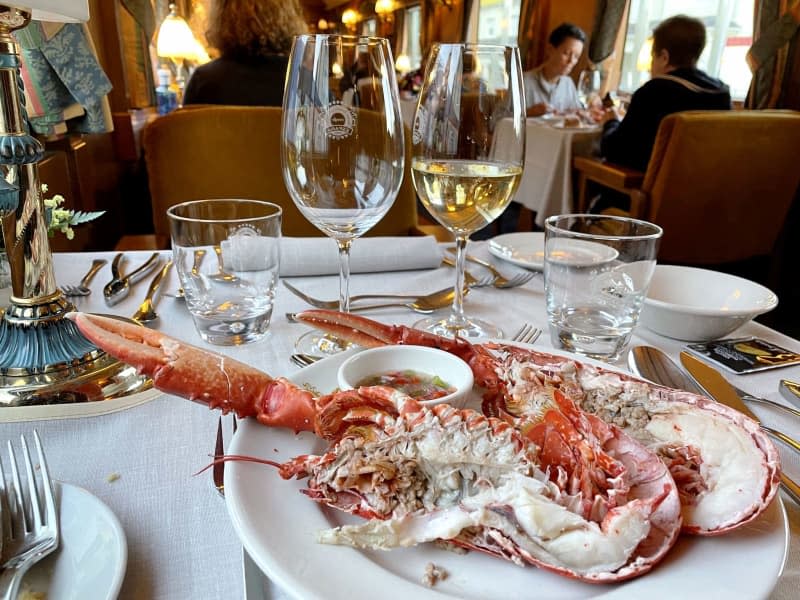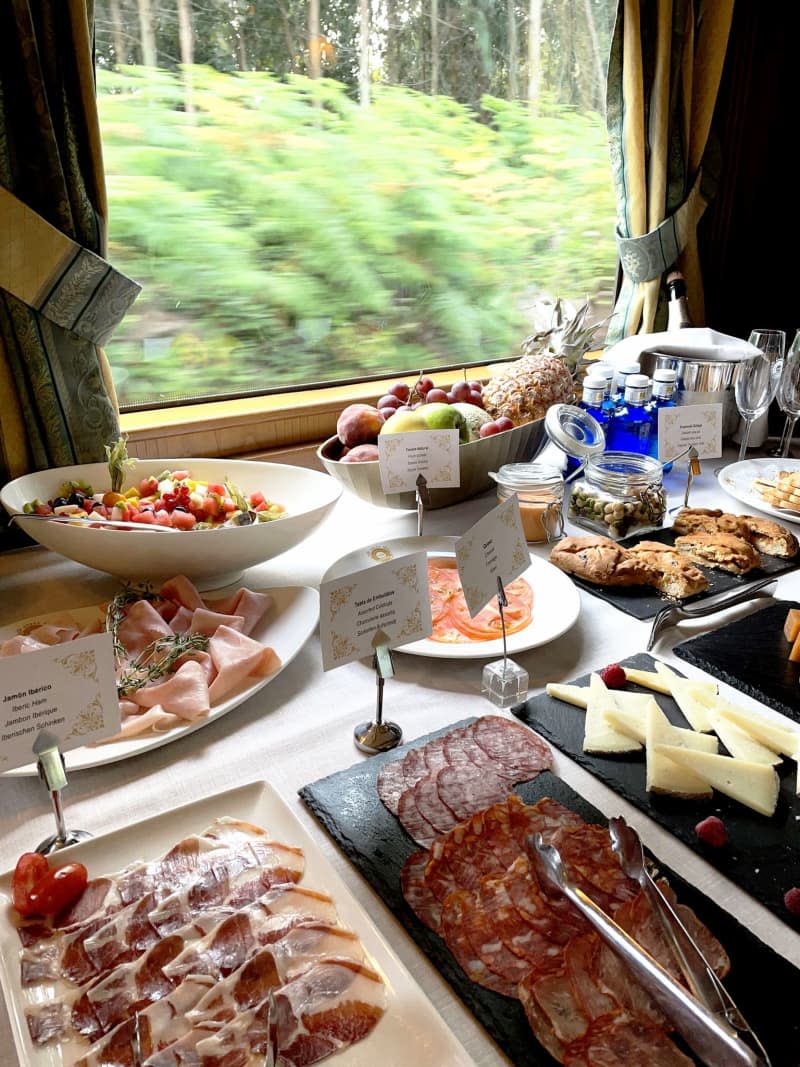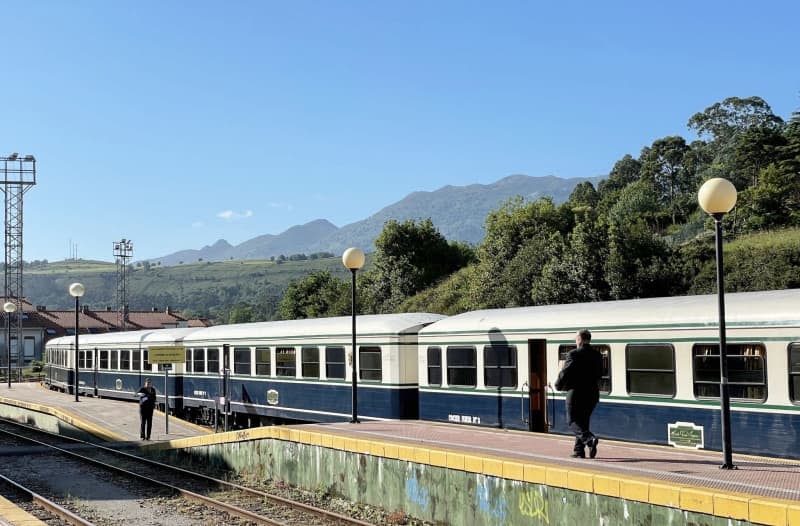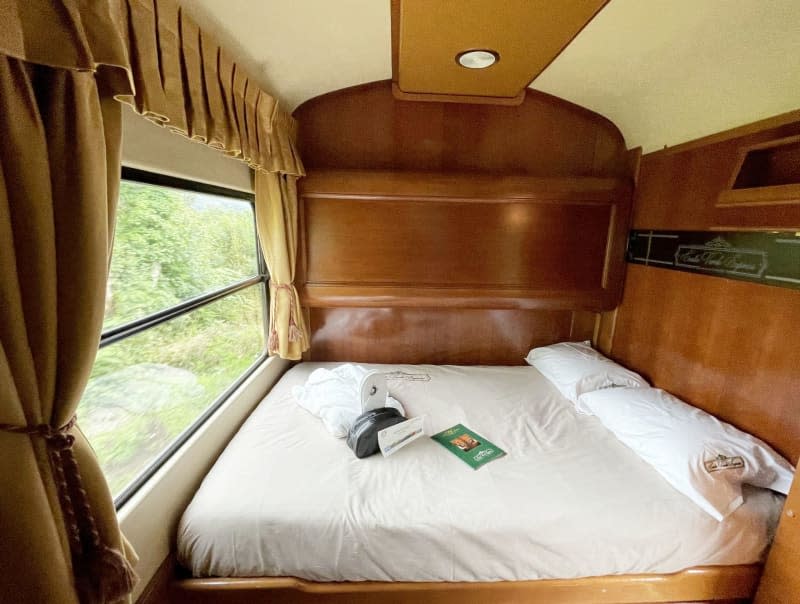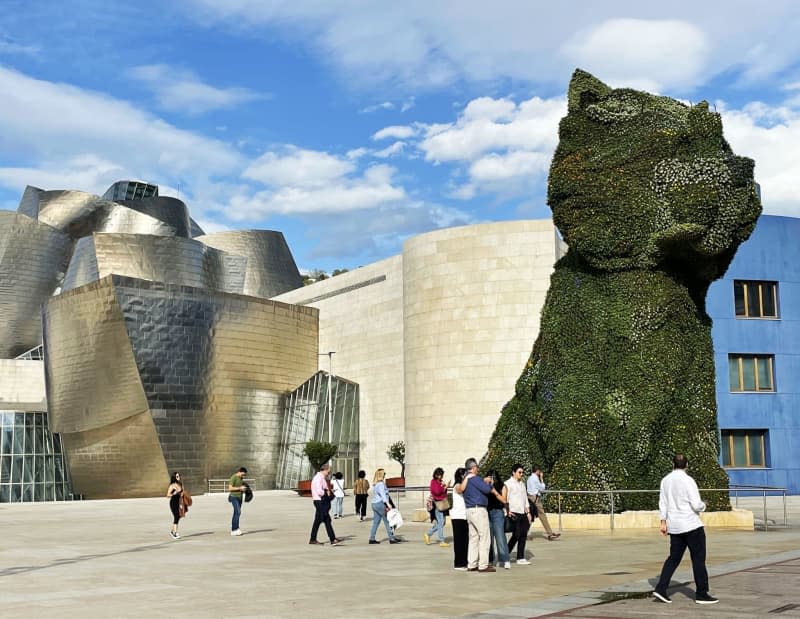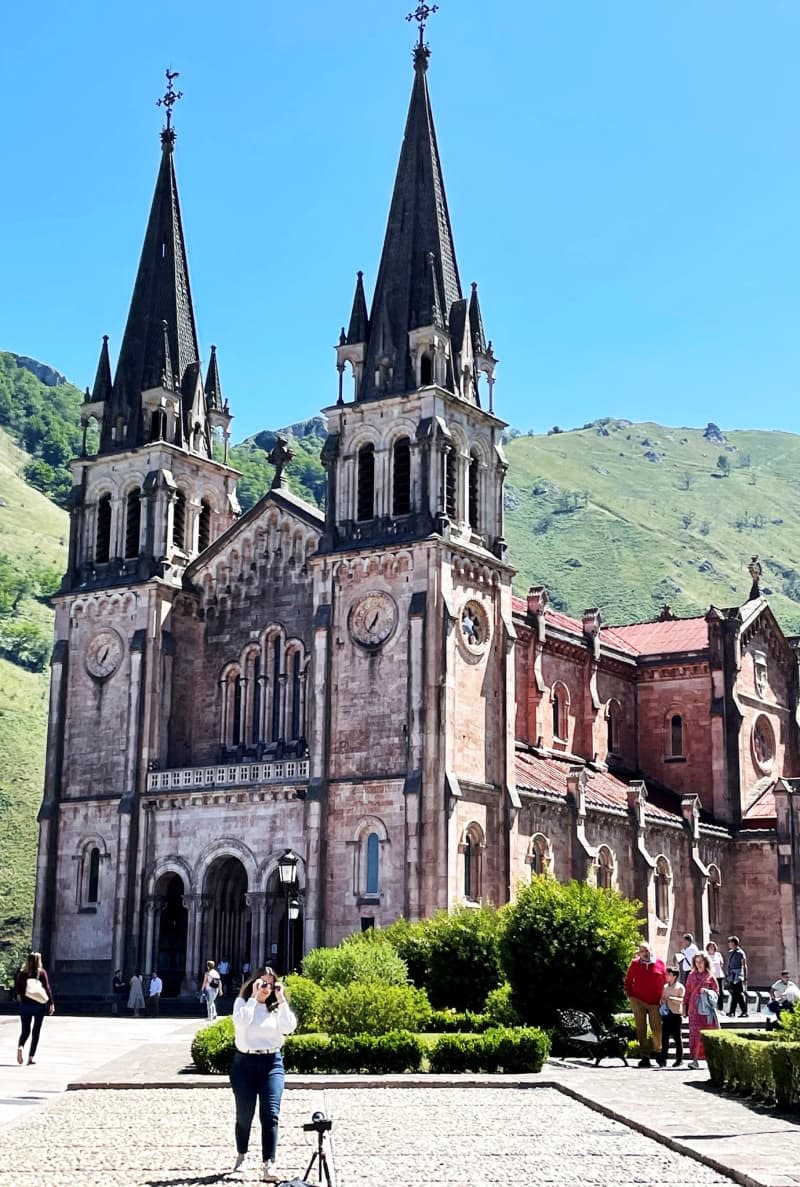A gentle jolt wakes the sleeping guests from their dreams as the Costa Verde Express leaves the small station of Viveiro at a walking pace. Early morning fog lies over the coastal town in the far northwest of Spain.
The tangy Galician Albariño white wine served with lobster and octopus in the dining car the night before has kept most people snoozing a bit longer. The onset of the rhythmic rattling of the train doesn’t make it any easier to get up. But in the corridor, the train crew is already ringing a bell: Breakfast.
In the dining car, the smell of warm croissants, fresh coffee, Ibérico ham, and scrambled eggs wafts through the air. A stewardess wearing a white uniform indicates a free table set with cloth napkins, fresh flowers and a small lamp with a yellow marbled glass shade. Again and again, the passing coastal landscape entices me to look out the window.
Long sandy beaches alternate with rugged rocky cliffs. In between, the train travels through dense forests and past old fishing villages. At a leisurely pace of 50 kilometres per hour, the Costa Verde Express travels along old narrow-gauge tracks, sometimes only a few meters from the Cantabrian Sea. In some parts, the route also runs parallel to Spain’s northern pilgrimage trail, the Camino del Norte.
Not an express train
While the pilgrims struggle by foot along the Costa Verde, Spain’s “Green Coast” that stretches along the northern province of Asturias, Julio Cesar Pallucchini and his wife Liliana enjoy the scenery over a café con leche in the wood-panelled, carpeted lounge of the Costa Verde Express.
“Thank goodness the train only partially lives up to its name,” Julio says. The Costa Verde, he says, is truly impressively green. On the other hand, Julio says he’s glad it’s not an express train, but rather a slow affair, allowing you to observe the landscape in peace.
This is exactly the kind of slower way of travelling he was looking for, he says. “And the good food, of course,” he says and laughs.
The train ride takes us through the Basque Country, Cantabria, Asturias and Galicia – Spain’s gourmet strongholds, Laura López says. She is head chef on board the Costa Verde Express. And food certainly plays an important role on this train journey.
While the daily excursions involve dining in restaurants, in the evenings Laura and her colleague Daniela prepare delicacies from the region where the train is currently stopping. Scallops and octopus in Galicia, wild salmon, fabada stew, and cabrales cheese in Asturias, the Cocido Montañes stew in Cantabria, stockfish in the Basque Country.
Spain’s answer to the Orient Express
The Costa Verde Express is one of the so-called historic royal trains of Spain’s state-owned railway company Renfe. They are something like a Spanish version of the Orient Express, reminiscent of train journeys from a bygone century.
The nostalgic train in the Belle Époque style takes six days to cover the 600 kilometres between Bilbao in the Basque Country and the Galician pilgrimage town of Santiago de Compostela. Depending on the date, it goes in either direction.
This particular train adventure started at the tomb of St. James the Apostle in Santiago de Compostela. Above the tomb stands the cathedral, the final destination of the Camino.
The first pilgrim and a Sistine Chapel
The train also stops in Oviedo, the capital of Asturias. The city’s cathedral was the starting point for the oldest Camino route. Asturias’ King Alfonso II is said to have been the first pilgrim, riding by horse to Galicia from Oviedo after the discovery of the Apostle’s tomb in 812.
In Cabezón de la Sal in Cantabria, the train stops at the station, as it does every evening, so that the passengers can sleep. Cool country air flows through the sliding window, crickets chirp.
The next morning, everyone realizes why Spain’s north is so green: it’s raining cats and dogs. On the platform, the train crew distributes umbrellas for the day’s outing. The bus takes half an hour to reach the Altamira Cave, often referred to as the Sistine Chapel of the Stone Age.
The prehistoric cave paintings of bison, deer and horses are at least 14,000 years old. Today, only a small number of lucky people drawn by lot can visit the original cave, wearing protective suits and masks to cover their nose and mouth. But there is hardly any perceivable difference to the replica of the cave next door.
Futuristic temples of art
Lunch is 2 kilometres away in Santillana del Mar. Aristocratic coats of arms and wooden balconies covered in flowers adorn the stone houses. The convent of the Poor Clares, Colegiata de Santa Juliana, is one of the most important Romanesque religious buildings in Cantabria.
In comparison, the elegant regional capital, Santander, with its magnificent Art Nouveau buildings, seems downright young. The silver-panelled Centro Botín opened here a few years ago. A magnificent cultural centre, it was built directly on the river promenade by the Botín banking family, owners of Santander Bank, and is home to contemporary avantgarde art.
But the Centro Botín cannot compete with the world-famous Guggenheim Museum in the Basque coastal metropolis of Bilbao. The building on the Nervión River, formed from silver titanium plates, looks like a gigantic napkin and can be seen in the distance from the Costa Verde Express. The view announces the end of the journey for Bilbao is this particular adventure’s final destination.
